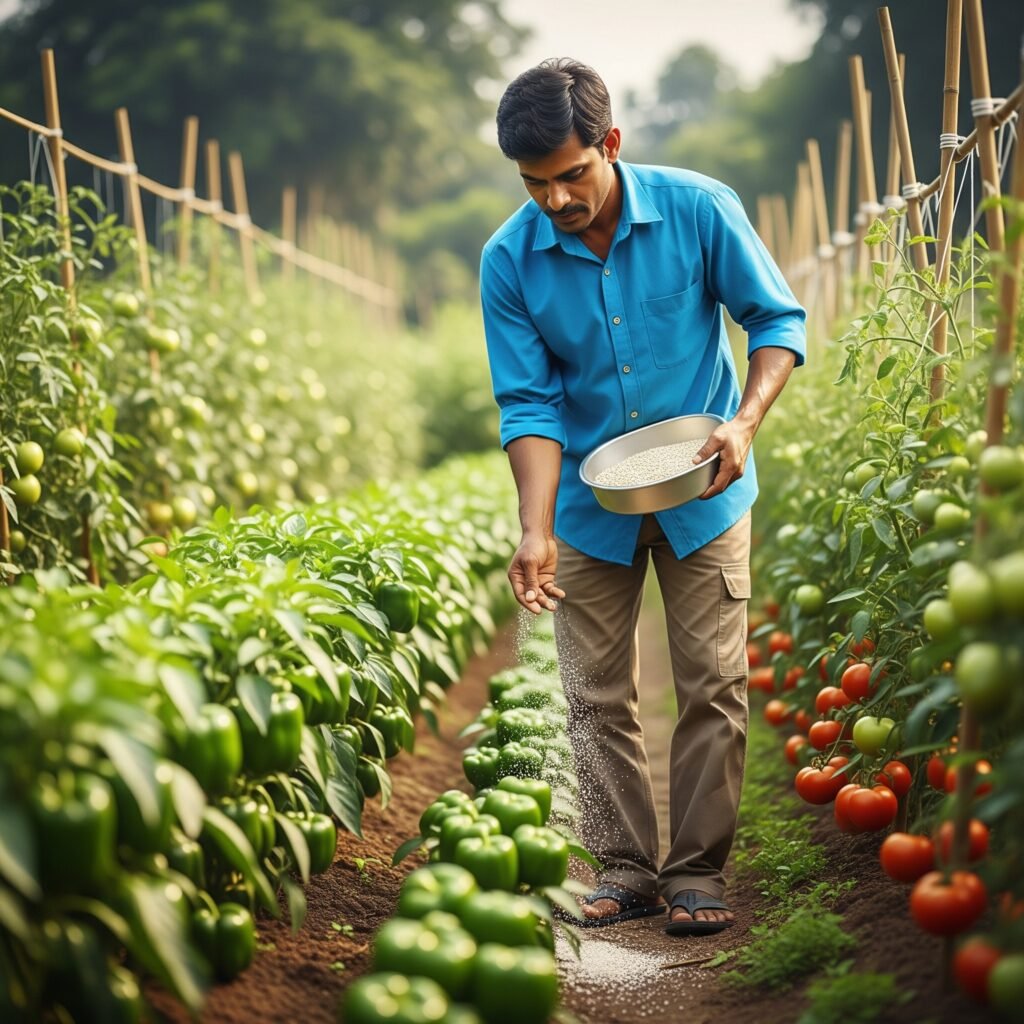Wednesday, 3 December 2025

As China orchestrates a calculated retreat from the global specialty fertilizer market, India’s response is not merely reactive—it is transformational. A quiet revolution, powered by indigenous innovation and strategic foresight, is germinating beneath the surface, promising to liberate the country from decades of import dependency.
In an era where supply chains are no longer merely economic conduits but instruments of geopolitical assertion, India finds itself at an inflection point. The Chinese state’s calibrated throttling of specialty fertilizer exports—particularly water-soluble fertilizers (WSFs), the lifeblood of high-efficiency agriculture—has sent tremors across the Indian agri-value chain. However, what may have been a crisis for some, has proven to be an opportunity for those quietly sowing the seeds of self-reliance.

Beneath the din of import anxieties and diplomatic recalibrations, a cohort of Indian agripreneurs, technologists, and policy architects have been laboring in quiet anticipation. Their mission: to reimagine India’s position in the global fertilizer ecosystem—not as a perennial consumer but as a discerning, indigenous producer of next-generation agri-inputs.
This is not merely a tale of scientific ingenuity. It is a parable of foresight, perseverance, and the audacity to build greenfield technologies in an arena long monopolized by external players.
Turning Dependency into Design Power
Water-soluble fertilizers—those elegant blends of plant nutrients engineered for precision application—have become the cornerstone of modern horticulture, greenhouse farming, and protected cultivation. Their utility lies in their efficiency: they reduce nutrient losses, enhance uptake, and leave virtually no chemical footprint. Yet, India, for all its agricultural prowess, remained perilously dependent on imports—largely from China—for these essential compounds.
” In the shadows of supply disruption, India chose foresight over fear. A silent innovation in water-soluble fertilizers, rooted in indigenous minerals and green chemistry, began to take shape. With government support breathing life into long-neglected ideas, the technology is now poised to scale. This is not just a fertilizer story—it’s India’s blueprint for self-reliant, sustainable growth ” —- Rajib Chakraborty, National President at SFIA – Soluble Fertilizer Industry Association, India
Recognizing this structural vulnerability, the Department of Science & Technology (DST), in a rare display of anticipatory policymaking, launched a flagship initiative to support indigenous technology development in the agri-input sector. Within its ambit, a novel WSF process technology—quietly nurtured by a cluster of innovators operating far from the limelight of venture capital and media buzz—was identified as a promising candidate for national support.
The innovation, by all metrics, was sui generis. It was predicated on two uncompromising criteria: the utilization of domestic mineral resources (thereby nullifying the need for imported raw materials), and the creation of a zero-effluent, low-emission manufacturing process. This was not simply a “Make in India” initiative—it was a “Think in India, Design in India, and Scale from India” paradigm.
Zero Effluent, Infinite Potential: India’s WSF Pilot Nears Launch
In early 2024, following rigorous scientific and techno-commercial due diligence, the Central Government accorded financial support of approximately Rs 2 crore to the project—a lifeline for a mission long stymied by the apathy of institutional financiers. This infusion catalyzed the transition from lab-scale validation to commercial piloting.
Today, the commissioning of the pilot facility is underway, with the first operational phase slated for completion within three months. Once online, this plant will not merely manufacture multiple WSF grades in a single integrated unit—it will do so with zero affluents, negligible carbon emissions, and complete compliance with the most exacting quality standards.
The process has already passed rigorous testing at accredited fertilizer and agricultural laboratories. The verdict: Unequivocal quality, consistent performance and enormous scalability.
WSFs: Quietly Transforming the Roots of Indian Agriculture
Water-soluble fertilizers are not a fad—they are the vanguard of the future. Their compatibility with precision irrigation systems, their capacity to augment crop yields while conserving water, and their ability to leave zero chemical residue render them indispensable to a nation striving for food security without ecological self-harm.

In India’s rapidly evolving horticultural landscape—from polyhouse tomatoes in Maharashtra to strawberry clusters in Himachal Pradesh—WSFs are redefining crop economics. Farmers employing fertigation systems report yield increases of up to 300 per cent, not merely improving incomes but catalyzing rural entrepreneurship.
But perhaps their most profound impact lies in their ability to dismantle the subsidy-dependent edifice of conventional fertilizer use. By shifting the farmer’s allegiance from quantity to quality, WSFs are ushering in a new nutrient regime—one aligned with climate resilience, export quality, and nutritional integrity.
Geoeconomics in Bloom: India Cultivates Sovereignty with Solubles
That this indigenous WSF technology has matured precisely as China pulls the plug on exports is no coincidence—it is a case study in policy prescience. Beijing’s export controls are not arbitrary. They are part of a larger design to prioritize domestic consumption, reduce environmental externalities, and consolidate control over global agri-input value chains.
India’s response is refreshingly antithetical. Instead of seeking quick-fix import substitutions from Morocco, Israel or Russia, it is investing in long-term technological sovereignty. This signals a paradigmatic shift: India is no longer content being a buyer in the global input bazaar. It aspires to be a supplier—and a standard-setter.
To that end, the Speciality Fertilizer Industry Association (SFIA) is engaging proactively with Indian embassies and trade missions worldwide. Through the SOMS (Speciality Organic Mineral Solubles) platform, India is projecting its indigenous WSF technology as a geopolitically stable, environmentally superior, and commercially scalable solution for a world hungry for sustainable agriculture.
The Atmanirbhar Arc
At its heart, this is more than an industrial story—it is a philosophical reorientation. The Atmanirbhar Bharat (self-reliant India) doctrine, too often misconstrued as isolationist, finds its most compelling expression here: in the empowerment of technologists working with Indian resources to solve Indian challenges for global markets.
The WSF innovation is also a rebuke to the fallacy that world-class technology must emanate from Silicon Valley-style unicorns. Here, the protagonists are unsung engineers and agripreneurs, driven not by valuation metrics but by a desire to eliminate structural asymmetries in India’s agri-economy.
In this sense, the pilot facility represents more than a manufacturing plant. It is a lighthouse of sovereign capability—one that could, in time, birth a new era of input-tech diplomacy, where India does not merely export food but the tools to grow it.
More Than Molecules, It Carries a Mandate
In an increasingly brittle global order, where access to critical resources is as much a strategic variable as military prowess, India’s tryst with indigenous WSF technology offers a glimmer of postcolonial confidence. It asserts that technological destiny can, and must, be claimed—not outsourced.
As the first batch of Made-in-India WSFs rolls off the lines later this year, it will carry more than just macro- and micronutrients. It will carry a message: that the world’s most populous nation is ready to lead not just in cultivating crops, but in cultivating capabilities.
In doing so, India may just fertilize the future—its own, and that of a world on the brink of agricultural reinvention.
—————– Suchetana Choudhury (suchetana.choudhuri@agrospectrumindia.com)